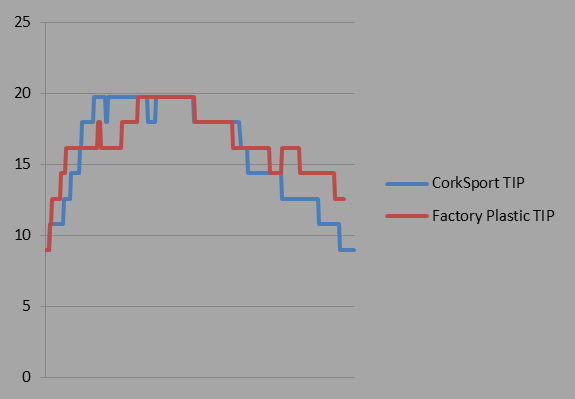There are some significant differences about how we designed our turbo inlet pipe compared to the other solutions offered for the DISI engine. We get a couple common questions that we thought would be worth reviewing for our readers about our design vs. the other options on the market today.
The first question we get asked most often is also the most obvious difference, which is why we chose metal over silicone. CorkSport uses a mandrel bent aluminum pipe to replace the factory plastic pipe instead of silicone. The reason we chose metal in place of silicone is to maintain a better flow through a very tight area. Metal cannot distort in shape or size and provides a smooth pipe to flow through that does not have the rougher characteristics associated with the nylon braid used in silicone.
The second question that comes up most frequently is, can a metal turbo inlet pipe transfer heat to the air rushing through the pipe at a rate that would increase the temperature of the air going into the motor? To begin with, the pipe itself is insulated from touching the turbo or block by silicone so the actual heat transferred into it is very low. It is insulated from the bracket that it bolts to by rubber and has no other contact with the engine bay other than through the air. The physical air in the engine bay should be the same no matter what intake you run so the turbo inlet pipe will eventually reach the same temperature.
In order to test this we ran our test car on the same day with less than 10 degrees difference between ambient air temp between tests. We put the car on the dyno and ran the car at the same load from the same rpm range at 20psi. This was about 2500 to 6500rpms. The above graph shows the difference between intake air temp and boost air temp. The intake air temp is basically outside air temp and the boost air temp is the temperature of the air entering the engine. There was basically no difference from metal to plastic telling us that the metal is not able to transfer heat any faster than the plastic to the actual air traveling into the motor.
Bottom line, during testing, the CorkSport Turbo Inlet Pipe showed a 14% improvement in flow over the stock turbo inlet pipe, resulting in improved boost levels, and customers can rest easy knowing that the aluminum piping will not affect the temperature of the air running to the motor
Brydon-




A inlet pipe for those of us thats as had the mazda valve cover replacement done.
It would also be helpful to also show the between intake air temp and boost air temp for a typical silicone TIP. Most people (myself included) are interested in seeing how we can improve these temps, not how it compares to the stock part.